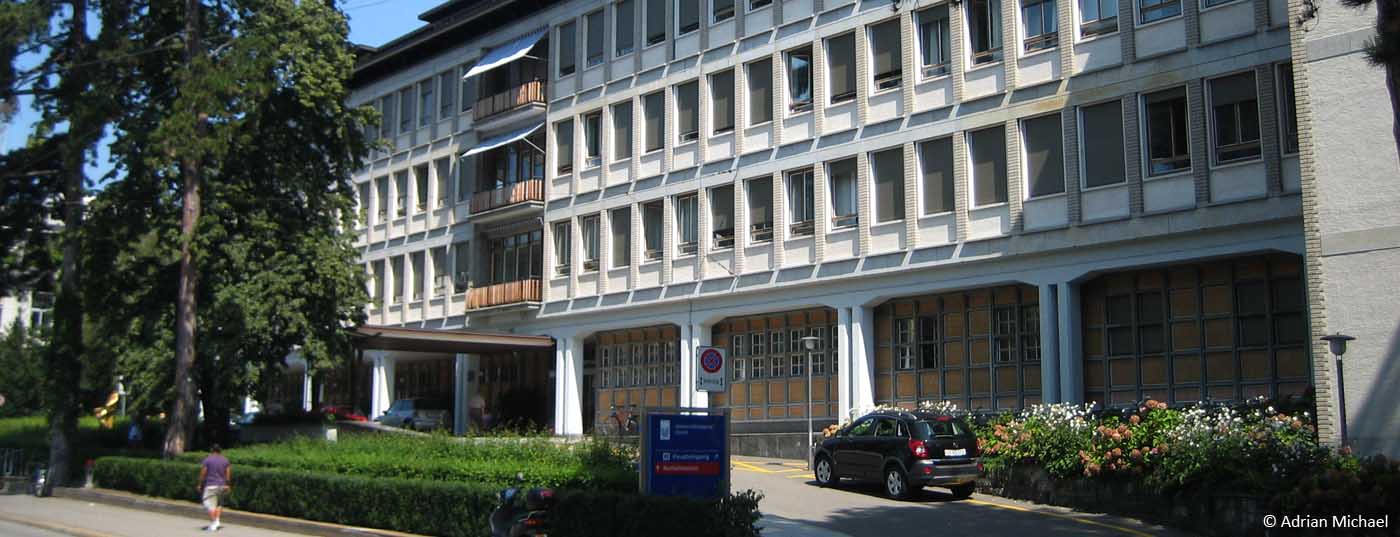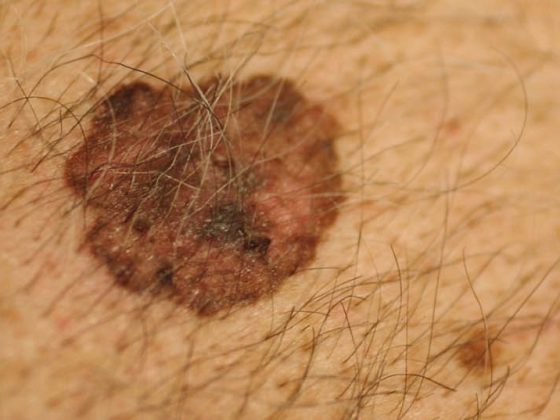On January 15, 2015, the Zurich Hypertension Day was held for the tenth time at the University Hospital Zurich. Already five minutes before the start of the event, the large lecture hall East was filled to capacity, and those coming later had to sit or stand on the stairs. The speakers demonstrated in their presentations that the great interest was justified: There was news on blood pressure management after cerebral stroke and on renal denervation, and an antihypertensive substance with a new, promising mode of action was presented.
Susanne Wegener, MD, Zurich, provided information on blood pressure management after stroke. 75% of patients with acute stroke have elevated blood pressure; the reasons are stress, pain, a full bladder, or nausea, but possibly a systemic response to the local circulatory disturbance to maintain perfusion.
Blood pressure management after cerebral stroke
Whether and how blood pressure should be lowered is controversial. Proponents of blood pressure lowering argue that high blood pressure is associated with poor outcome and increases the risk of early recurrence, and that blood pressure lowering also reduces the risk of bleeding. The argument against lowering blood pressure is that blood flow to the penumbra must be maintained to improve outcome. The ENOS trial, published in 2014, showed that blood pressure reduction in acute stroke had no effect on the extent of disability [1]. The speaker recommended that the following key points be considered:
- Reduce blood pressure values above 220/120 mmHg in any case.
- Blood pressure values below 185/110 mmHg must be achieved before and after lysis.
- Lower blood pressure carefully, 15-25% maximum within 24 hours.
- Normalization of blood pressure is observed from the 2nd-3rd day. In the case of comorbidities such as myocardial infarction or aortic aneurysm, the target is earlier.
- Reduction below 120 mmHg is not beneficial, and the target blood pressure of 140/90 mmHg remains current.
- After a cerebral hemorrhage, blood pressure should be lowered to below 140 mmHg in the first 24 hours, according to the INTERACT II study.
There’s life in the old dog yet: news on renal denervation
Current information on renal denervation was provided by Prof. Thomas F. Lüscher, MD, Zurich. That renal denervation works at all is due to the strong efferent and afferent sympathetic innervation of the kidneys. To date, approximately 50 patients with refractory hypertension have been treated with renal denervation at the University Hospital Zurich. In these, an average reduction of 30 mmHg in systolic blood pressure and 10 mmHg in diastolic blood pressure was achieved after 3-6 months. Approximately 70% of patients became normotensive-albeit with continued antihypertensive medication. The Symplicity HTN-3 trial, in which half of the patients were “treated” with Sham ablations, showed a less good result: No significant reduction in blood pressure was observed in the denervated patients [2].
Prof. Lüscher expressed his doubts about the quality of the interventions performed. Analysis of the data revealed that most patients probably did not ablate well, meaning that not enough sympathetic nerves were cut. Indeed, Symplicity HTN-3 was also shown to have a marked decrease in blood pressure at 12-16 ablations. The inadequate ablations were probably due to the fact that most of the ablating cardiologists in Symplicity HTN-3 were completely inexperienced in renal nerve ablation technique. Previous studies had shown that the extent of blood pressure reduction was directly dependent on the number of nerve cords ablated. “Also, it is important to ablate near the renal artery bifurcation, that is, near the kidney, not near the aorta,” Prof. Luescher said. “It’s the only way to catch enough nerve cords.” The speaker recommended that further studies be conducted on renal denervation, including the use of multi-electrode systems.
Another problem with Symplicity HTN-3 was the high proportion of African Americans in the study population. These patients generally do not respond well to denervation because they have lower renin levels and are more salt-sensitive (so-called “low-renin hypertension”) than members of other ethnic groups. Prof. Lüscher explained the most likely reason for this difference: “On the ships that brought black Africans to America as slaves, mortality was very high – those who could retain water and salt tended to survive. So in their descendants, today’s African Americans, there is genetic selection that is now having an adverse effect on blood pressure regulation.”
Inhibition of Neprilysin Improves Outcome in Heart Failure
In his presentation, Prof. Dr. med. Frank Ruschitzka, Zurich, introduced a new active principle for lowering blood pressure. In his opinion, ACE inhibitors (and perindopril in particular) are still the best antihypertensives because they are the only substances that also reduced mortality in studies. A new compound in development (LCZ696) is a combination of an angiotensin receptor antagonist and an inhibitor of the enzyme neprilysin. Neprilysin accelerates the breakdown of vasoactive hormones, including natriuretic blood pressure-lowering peptides (NP). Inhibition of neprilysin, which corresponds to neurohumoral modulation, enhances NP. The administration of LCZ696 alone hardly lowers blood pressure, but in combination with valsartan a significant blood pressure reduction can be observed. This combination is also called “dual-acting angiotensin receptor-neprilysin inhibitor” (ARNI).
The PARADIGM-HF trial tested the new drug combination against enalapril in heart failure, with startling and very impressive results published in NEJM in September 2014 [3]. The study was stopped early after a median follow-up of 27 months because patients in the LCZ696 group died significantly less frequently and were hospitalized less than patients in the enalapril group. Few side effects occurred: Hypotension and angioedema were more common in the LCZ696 group, but renal failure, hyperkalemia, and cough were less common than in the enalapril group. Approval of the new drug is expected at the end of this year or early next year, initially with the indication heart failure; whether and how the drug combination can also be used in hypertension is the subject of further studies.
Source: 10th Zurich Hypertension Day, UniversitySpital, January 15, 2015.
Literature:
- The ENOS Trial Investigators: Efficacy of nitric oxide, with or without continuing antihypertensive treatment, for management of high blood pressure in acute stroke (ENOS): a partial-factorial randomized controlled trial. Lancet 2014; published online october 14th; http://dx.doi.org/10.1016/S0140-6736(14)61121-1 (open access).
- Bhatt DL, et al: A Controlled Trial of Renal Denervation for Resistant Hypertension. N Engl J Med 2014; 370: 1393-1401. DOI: 10.1056/NEJMoa1402670.
- McMurray J, et al: Angiotensin-neprilysin inhibition versus enalapril in heart failure. N Engl J Med 2014; 371: 993-1004. DOI: 10.1056/NEJMoa1409077.
CARDIOVASC 2015; 14(2): 29-30











